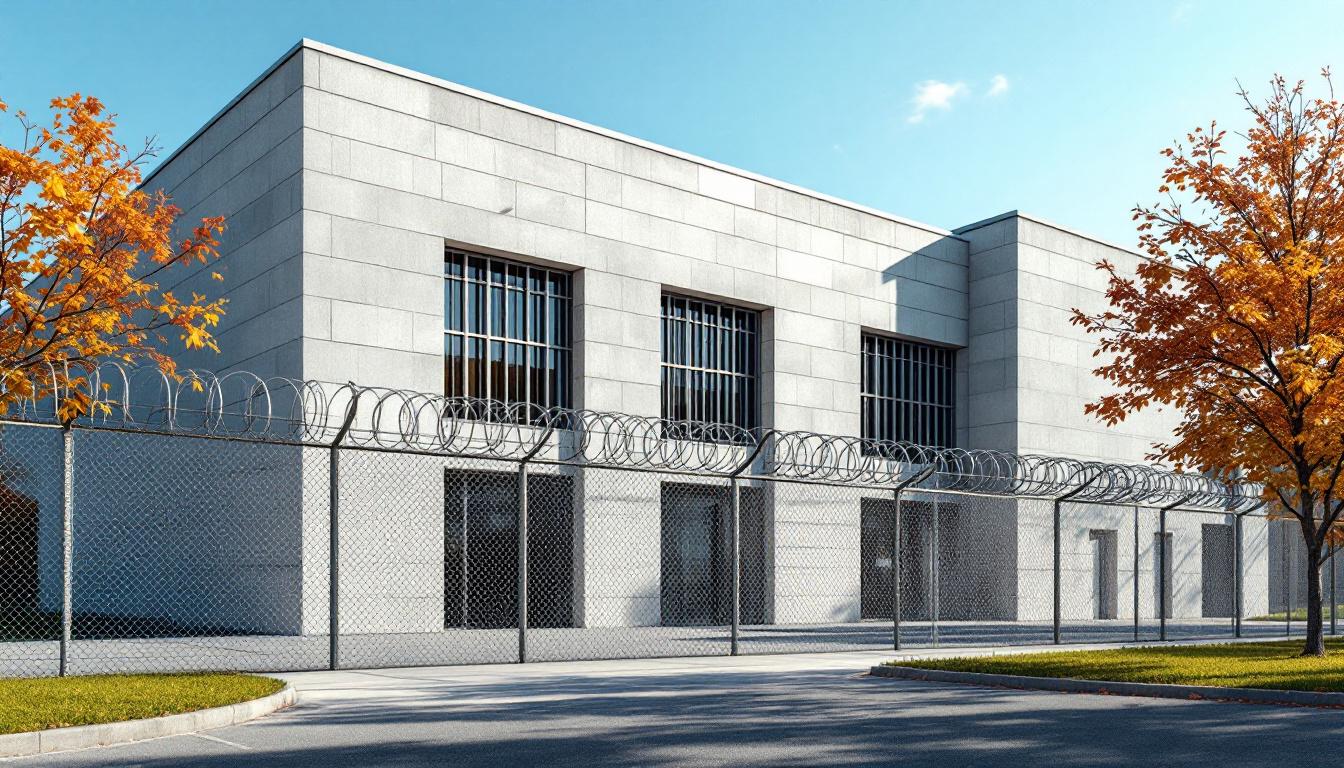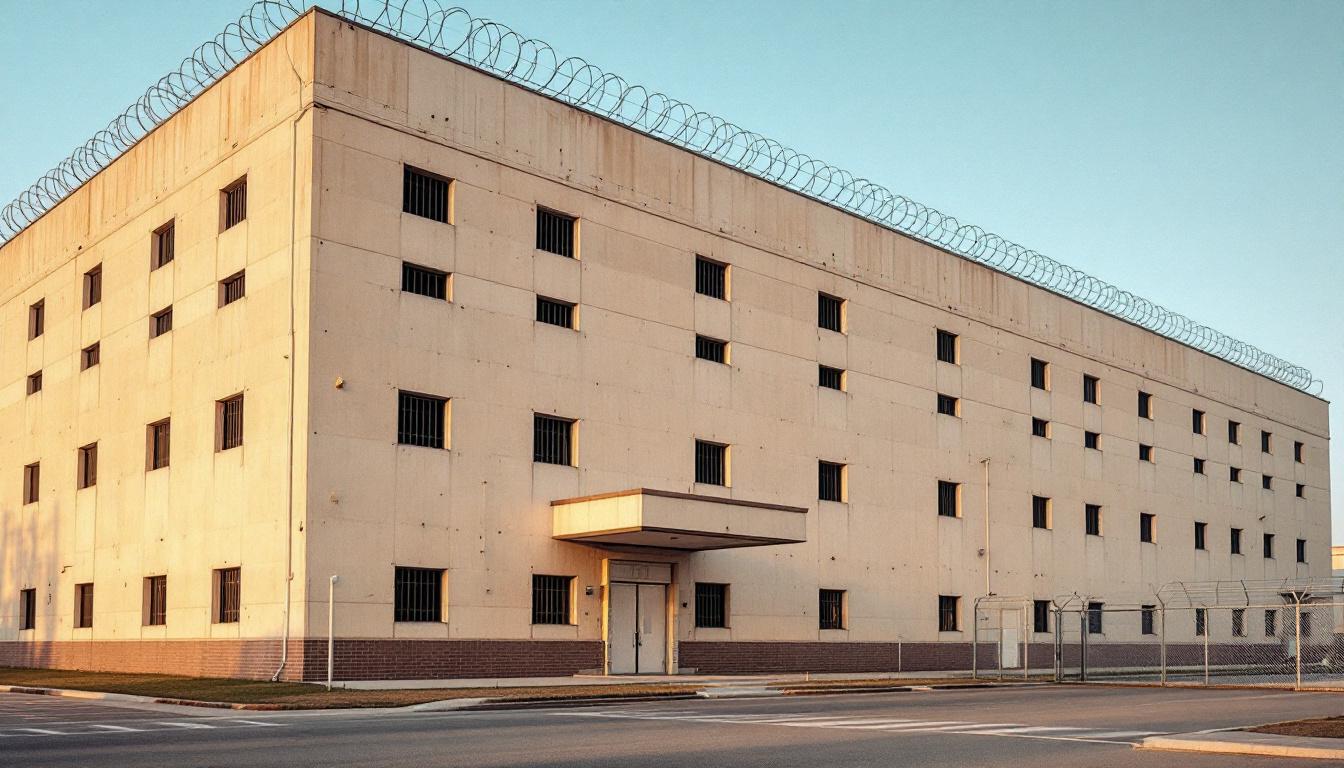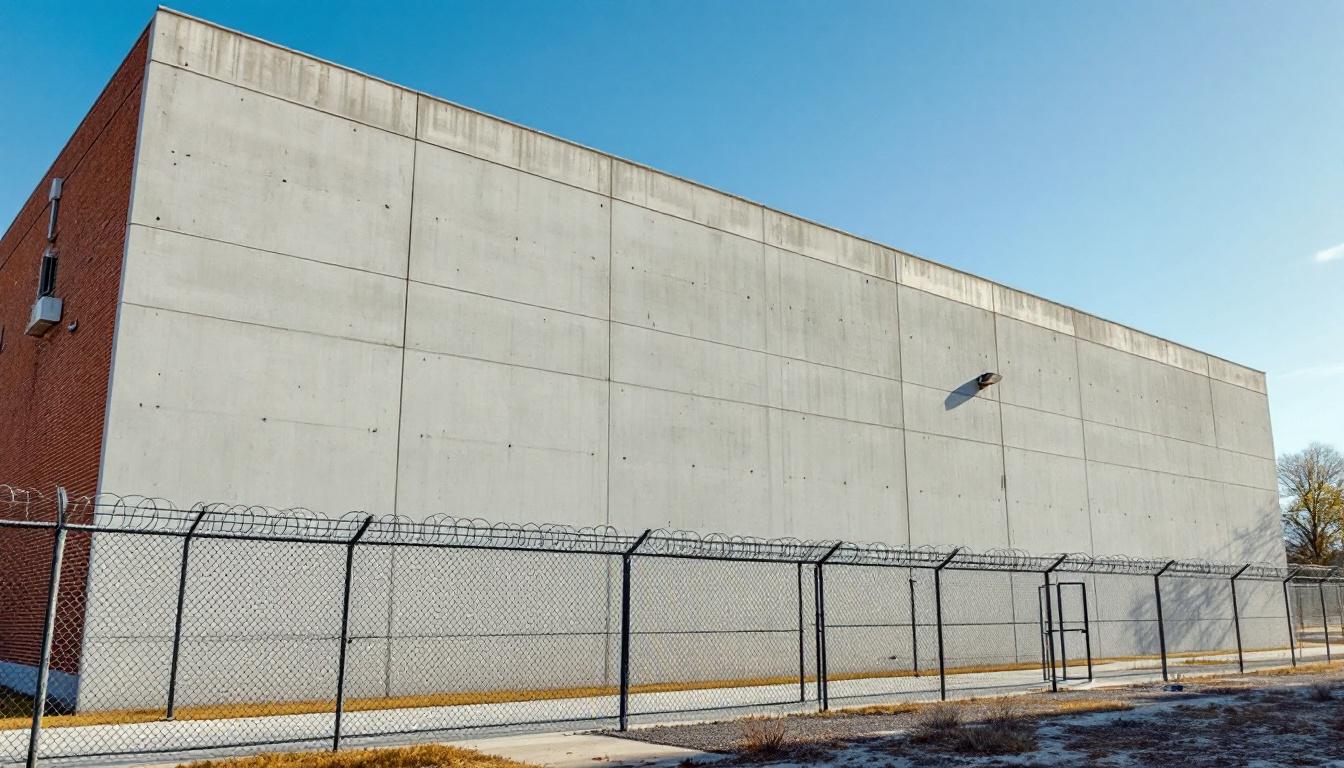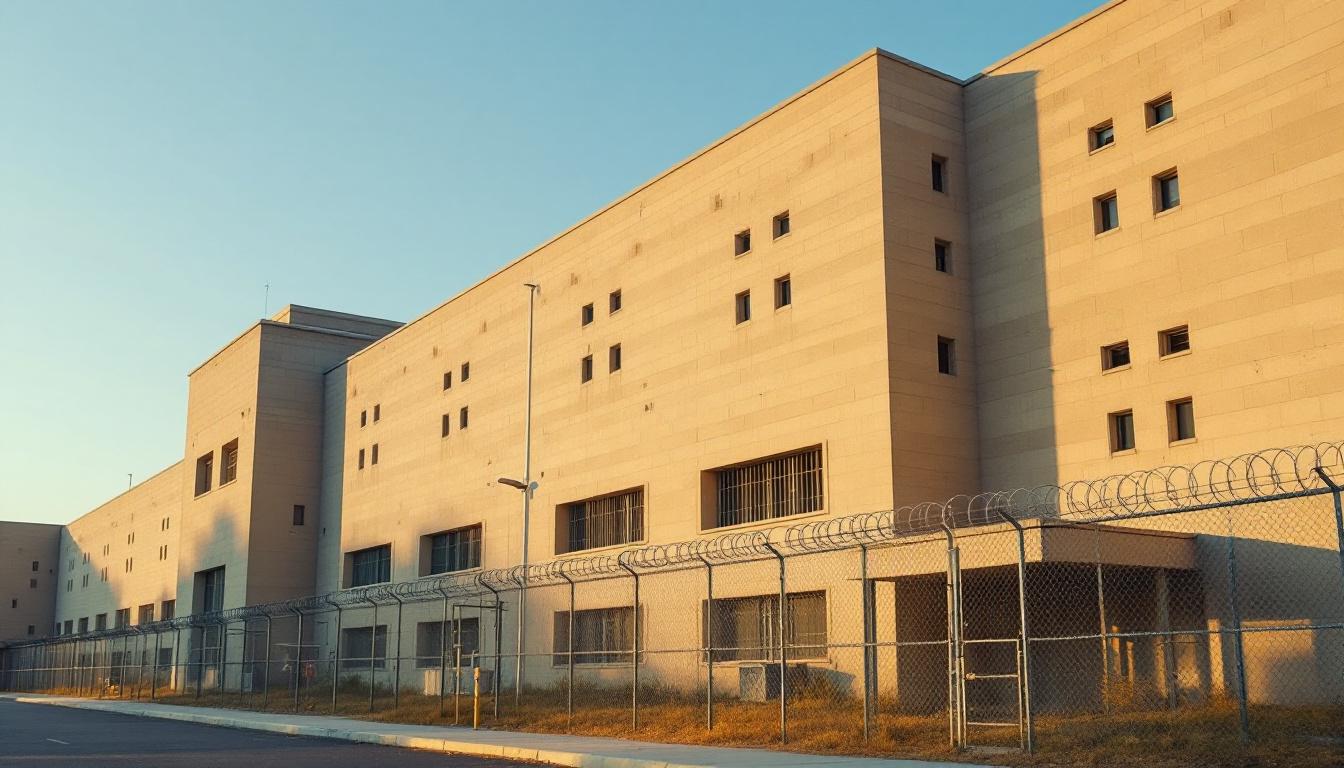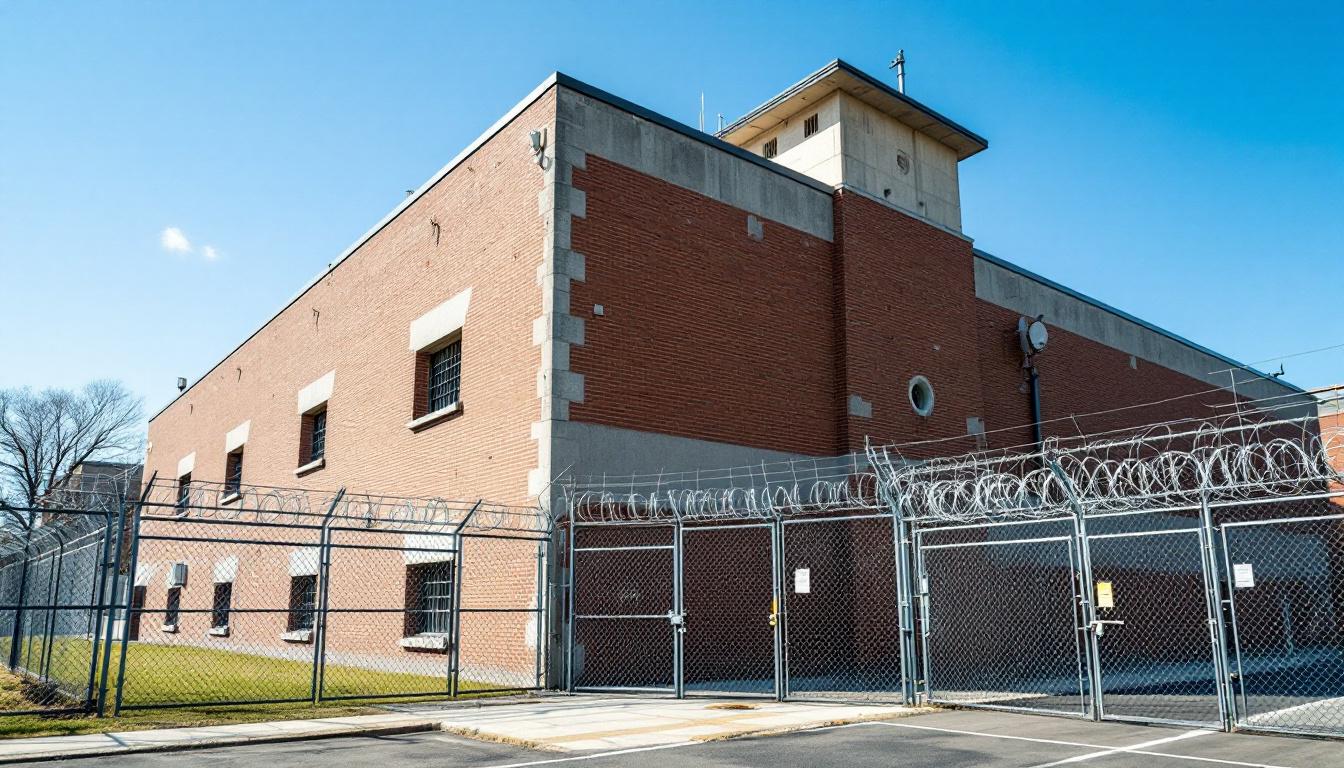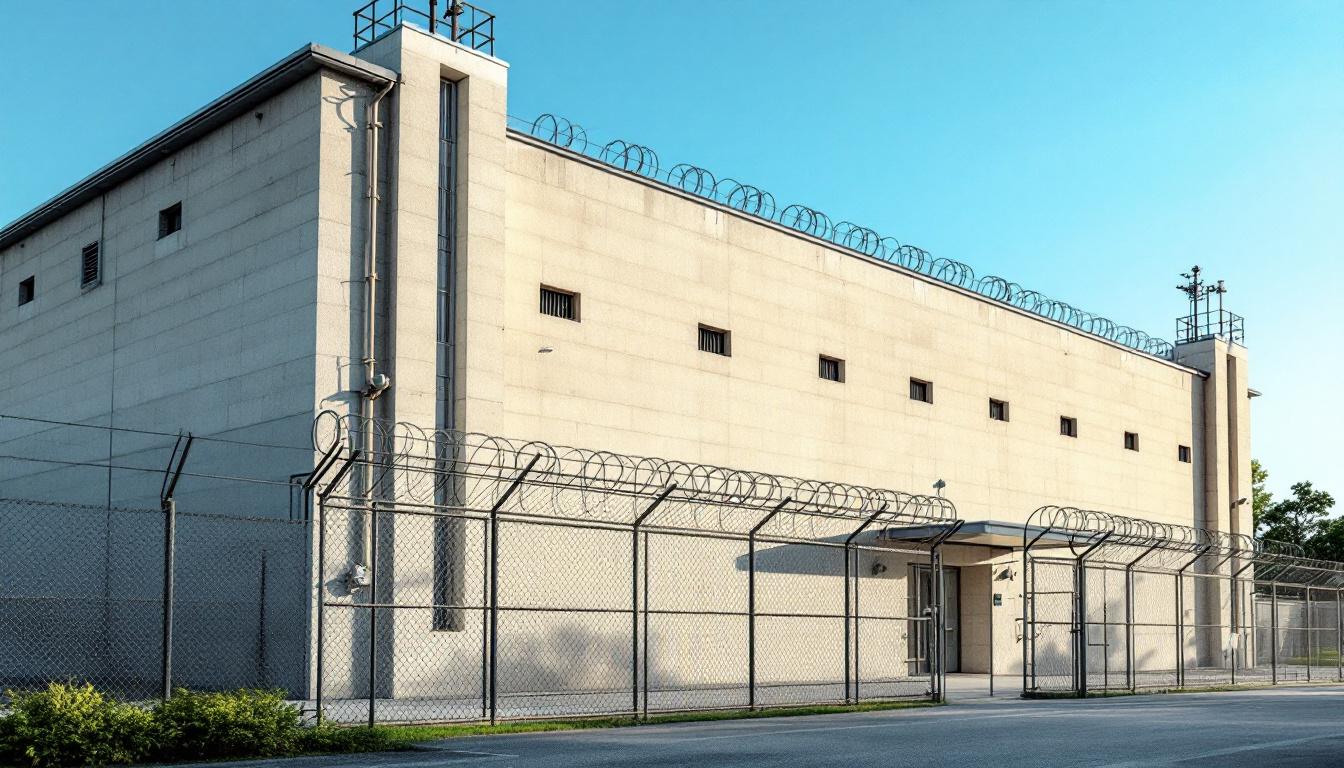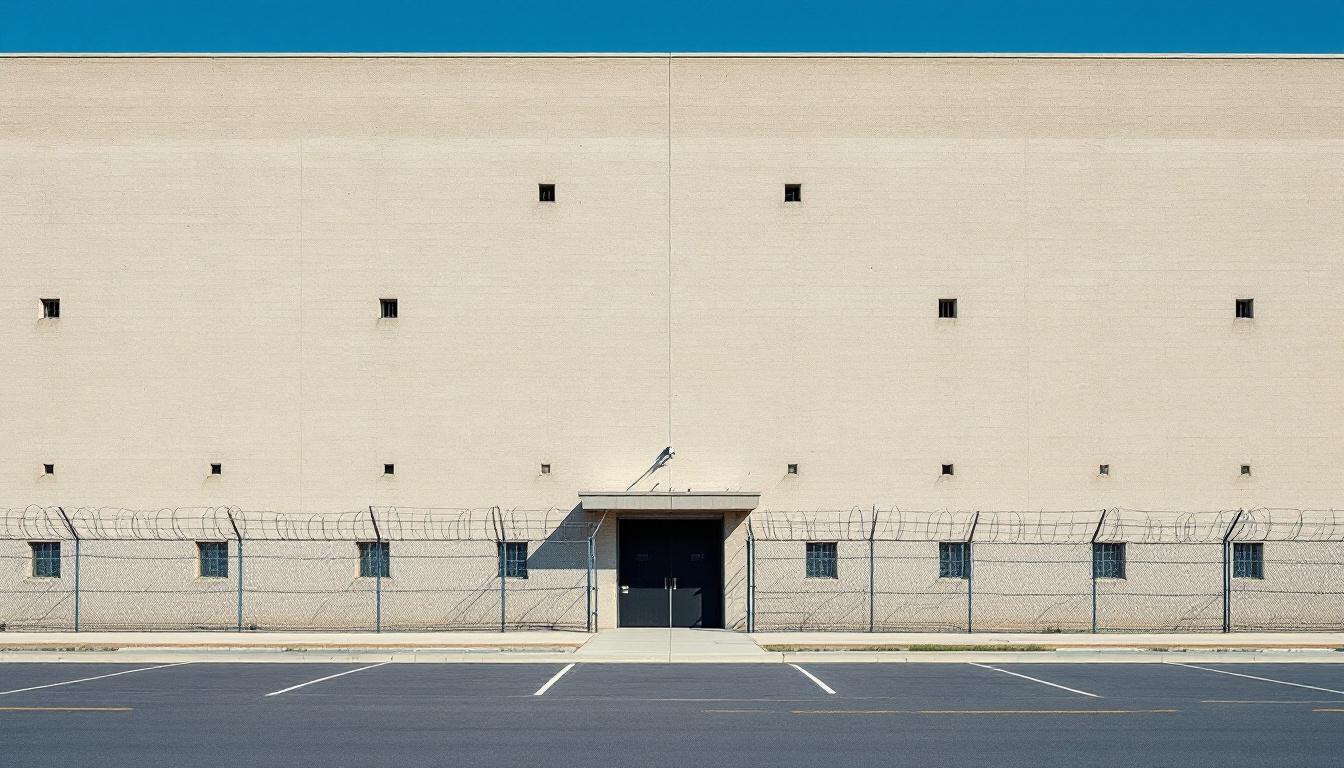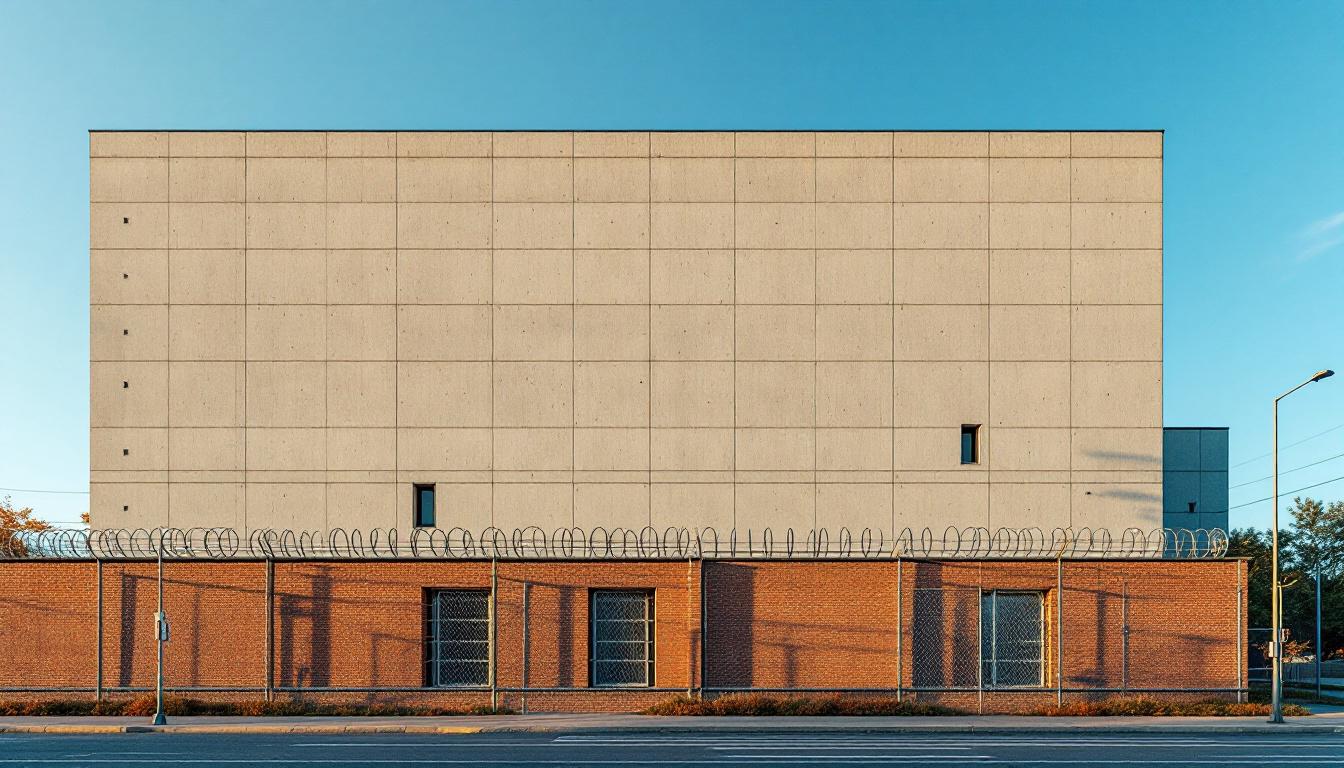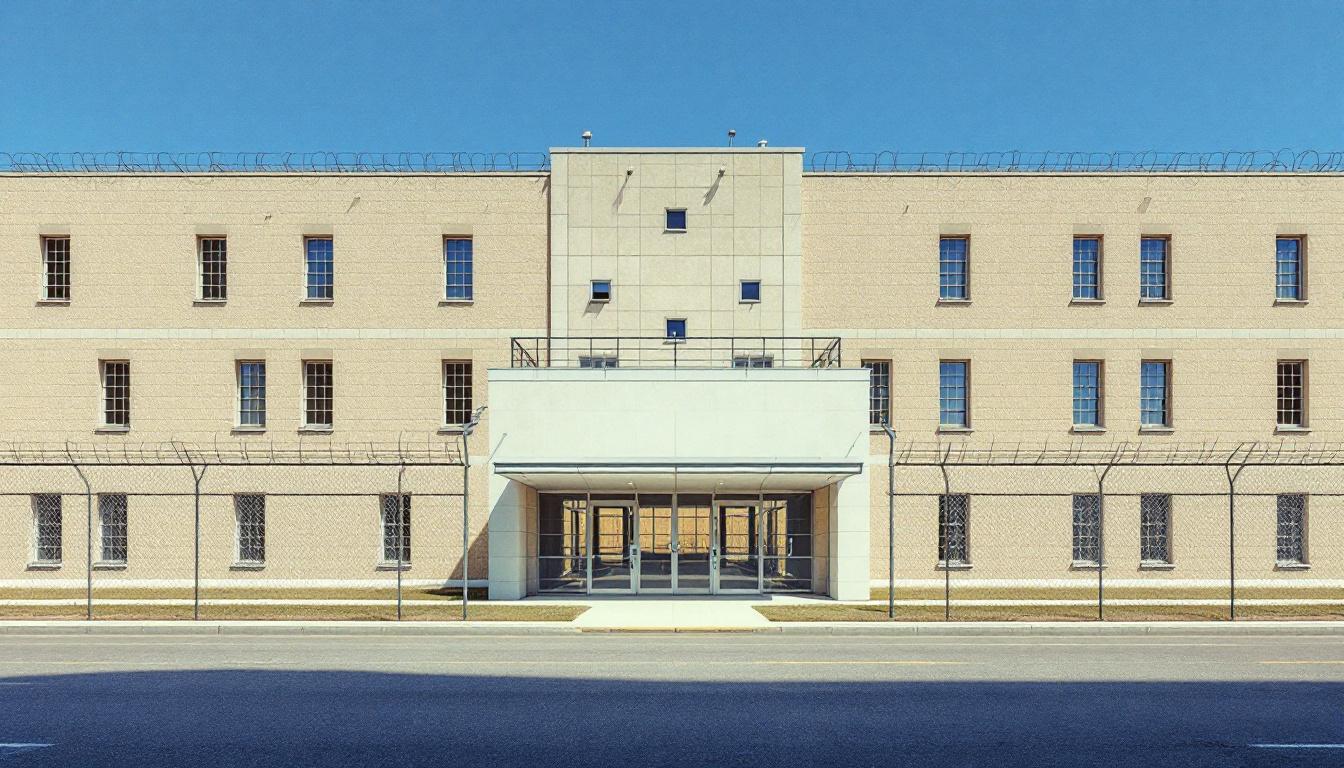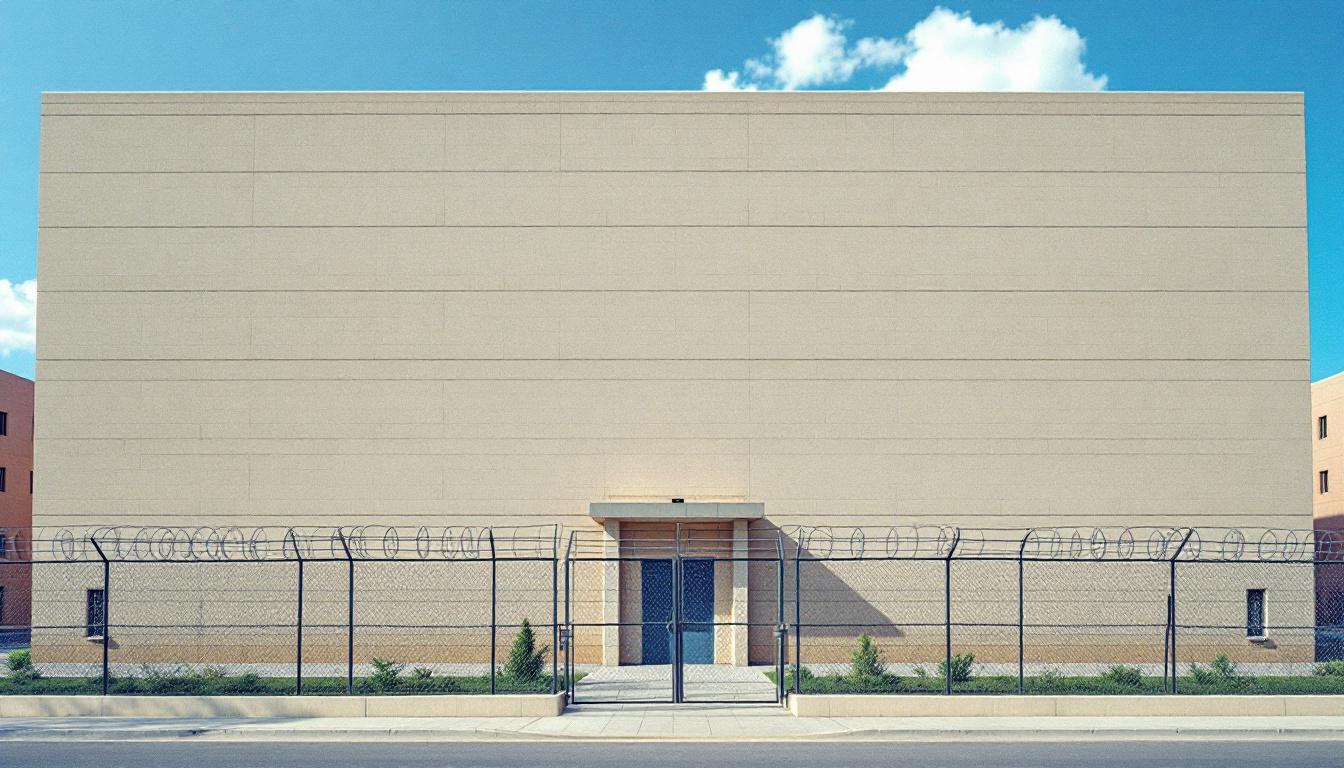
Quick Navigation
How to contact an inmate at Gulf Correctional Institution Annex
This comprehensive guide will walk you through how to connect with an inmate at Gulf Correctional Institution Annex. Follow the steps below to find an inmate and send letters and photos:
- Search for the inmate using our search tool below
- Create your account or log in to Penmate
- Write your message (up to 6,000 characters)
- Send instantly - inmates receive printed copies daily
Find an Inmate
Search for an inmate to start communicating today
Tip: You can search by first name, last name, or inmate ID number
To contact a person at Gulf Correctional Institution Annex start by searching for the person on the official facility website. Perform a search by following these steps:
- Step 1: Enter their first name and last name into the search form and click "Search"
- Step 2: Locate their inmate record
- Step 3: Write down their Inmate ID and any housing information provided
Important! Be sure to enter the person's full name. Nicknames should not be used.
How to Send Messages to Inmates

You can use your phone or computer to send emails, letters, and photos to an inmate. Messages are sent electronically to inmate tablets or kiosks at the facility. If you would like to send a message, start by searching for an inmate at Gulf Correctional Institution Annex.
Sending Photos and Postcards

A great way to send love and support to a loved one at Gulf Correctional Institution Annex is to send photos and postcards. It only takes a few minutes to send photos from your phone and it makes a huge difference. You can also mail postcards with words of support and inspiration, or design your own postcard for special moments like birthdays and holidays.
Important! Be sure not to send any explicit photos or they may not be approved by the facility. You can also use a photo printing app like Penmate to make sure your photos are printed at the correct size (4x6 or 3x5) and are mailed according to the rules and regulations of Gulf Correctional Institution Annex.
Frequently asked questions about Gulf Correctional Institution Annex
-
How long does it take to deliver a message?
If you're sending an email message your letter is usually delivered within 24-48 hours. For messages sent via mail you should expect delivery within 3-7 days. All messages will need be approved by Gulf Correctional Institution Annex.
-
How much does it cost to send a message to Gulf Correctional Institution Annex?
You can send a message free using your phone or mail a message via USPS for the price of a $0.60 stamp and envelope. You can also purchase credits or e-stamps from services starting at $1.99.
-
What services can I use to contact an inmate at Gulf Correctional Institution Annex?
Penmate
You can use Penmate to send letters and photos to an inmate from your phone. It's an easy way to stay in touch during your loved one's incarceration. Use the inmate locator to find an inmate's location and contact information, then you can send messages within a few minutes.
Securus messaging
Securus may be another option for communicating with an inmate at Gulf Correctional Institution Annex. You can create a friends and family account and purchase credits to send messages. All messages will be reviewed and must be approved by the facility.
JPay
Some county jails and state prisons may support sending messages with JPay. You must register an account with the system, find your loved one, and purchase stamps to send messages. For some locations you can also attach photos.
Smart Jail Mail
You may also check if Smart Jail Mail is available at Gulf Correctional Institution Annex. Smart Jail Mail is operated by Smart Communications and has contracted with some state and county jails. After purchasing credits, your messages and photos are sent to the facility, printed out, and then handed out to your loved one.
-
What is the mailing address of Gulf Correctional Institution Annex?
Mailing address:
Gulf Correctional Institution Annex
699 Ike Steele Rd
Wewahitchka, FL 32465
Phone: (850) 639-1000Business hours:
- Monday: 8:00 AM – 2:30 PM
- Tuesday: 8:00 AM – 2:30 PM
- Wednesday: 8:00 AM – 2:30 PM
- Thursday: 8:00 AM – 2:30 PM
- Friday: 8:00 AM – 2:30 PM
- Saturday: 7:30 AM – 3:00 PM
- Sunday: 7:30 AM – 3:00 PM
-
What are the visiting hours at Gulf Correctional Institution Annex?
Visiting hours at Gulf Correctional Institution Annex vary by housing unit and security level. Generally, visits are scheduled on weekends and holidays, with some facilities offering weekday visits. Contact the facility directly at (850) 639-1000 or check their website for the current visiting schedule. Visits typically last 30-60 minutes and must be scheduled in advance.
-
What items are prohibited when sending mail to Gulf Correctional Institution Annex?
Prohibited items typically include: cash, personal checks, stamps, stickers, glitter, glue, tape, staples, paperclips, polaroid photos, musical or blank greeting cards, hardcover books, magazines with staples, and any items containing metal or electronics. Only send letters on plain white paper with blue or black ink. Photos must be printed on regular photo paper (no Polaroids). Always check with Gulf Correctional Institution Annex for their specific mail policies.
-
How do I send money to an inmate at Gulf Correctional Institution Annex?
You can send money to an inmate at Gulf Correctional Institution Annex through several methods: 1) Online using JPay, Access Corrections, or the facility's approved vendor, 2) Money orders mailed directly to the facility with the inmate's name and ID number, 3) Kiosks located in the facility lobby, or 4) Over the phone using a credit or debit card. Fees vary by method, typically ranging from $2.95 to $11.95 per transaction.
-
Can I schedule a video visit with an inmate at Gulf Correctional Institution Annex?
Many facilities now offer video visitation as an alternative to in-person visits. At Gulf Correctional Institution Annex, video visits may be available through services like Penmate, Securus Video Connect, GTL, or ICSolutions. Video visits typically cost $10-20 for 20-30 minutes and must be scheduled in advance. You'll need a computer or smartphone with a camera and reliable internet connection. Contact the facility for their specific video visitation policies and approved vendors.
-
What identification do I need to visit an inmate at Gulf Correctional Institution Annex?
All visitors must present valid government-issued photo identification such as a driver's license, state ID, passport, or military ID. Minors must be accompanied by a parent or legal guardian who can provide the minor's birth certificate. Some facilities require visitors to be on the inmate's approved visitation list, which may require a background check. Contact Gulf Correctional Institution Annex for specific ID requirements and visitor approval procedures.
-
How can I find out an inmate's release date?
To find an inmate's release date at Gulf Correctional Institution Annex, you can: 1) Use the online inmate search tool if available, 2) Call the facility's records department, 3) Contact the inmate's case manager or counselor, or 4) Have the inmate provide this information during a call or visit. For privacy reasons, some facilities only release this information to immediate family members.
Facility Overview
Contact Information
Gulf Correctional Institution Annex699 Ike Steele Rd
Wewahitchka, FL 32465
Phone: (850) 639-1000
Official Website

About Gulf Correctional Institution Annex
Serving Florida's correctional mission through secure custody and structured programming, Gulf Correctional Facility operates within the rural community of Wewahitchka, providing essential services for those incarcerated while maintaining public safety as its primary objective. Located in Gulf County along Florida's Gulf Coast, this FL correctional facility typically functions as part of the state's broader network of institutions designed to balance security requirements with evidence-based approaches to offender management. The facility's positioning in this small Panhandle community reflects Florida's strategic distribution of correctional resources across diverse geographic regions.
Gulf Correctional Facility generally maintains operational standards consistent with state correctional guidelines, often including basic educational services, work assignments, and those incarcerated services that support daily institutional functioning. The facility may offer various programming opportunities designed to address behavioral needs and prepare individuals for potential reintegration, though specific offerings typically vary based on security classifications and individual assessments. Healthcare services, recreational activities, and visitation programs are commonly available to support both institutional management and family connections during incarceration periods.
As part of Florida's correctional system, the facility operates under state oversight and regulatory frameworks that emphasize both public protection and evidence-based correctional practices. Staff training and operational procedures generally align with Department of Corrections standards, while the rural Wewahitchka setting provides a structured environment removed from urban influences that may have contributed to criminal behavior. The institution's role within Gulf County also reflects the economic and social connections between correctional facilities and their surrounding communities throughout Florida's correctional landscape.
Programs & Services
Personal transformation begins when those incarcerated at Gulf Correctional Facility engage with comprehensive offerings designed to address individual needs and foster meaningful change. The facility's approach emphasizes creating structured pathways that allow participants to develop essential life skills while addressing underlying challenges that may have contributed to their incarceration. Through a combination of educational, vocational, and therapeutic opportunities, the facility typically provides a foundation for successful reintegration into the community.
Educational offerings often include basic literacy programs alongside more advanced coursework that may help those incarcerated earn their GED or develop specific academic skills. Special education services are typically available for participants who require additional support or accommodations in their learning journey. Also, vocational training in areas such as upholstery provides hands-on experience that can translate directly into employment opportunities upon release. Agriculture programs may furnish practical skills in farming and land management, offering both therapeutic benefits and potential career pathways.
Work release opportunities often allow eligible participants to maintain employment in the community while serving their sentence, creating a bridge between incarceration and full reintegration. Substance abuse treatment programs typically address addiction issues through structured therapeutic interventions. Also, trauma-informed care approaches may be integrated throughout various offerings, recognizing that many participants have experienced significant trauma that requires specialized attention. These support services work together to create a comprehensive framework that addresses the complex needs of those incarcerated while promoting personal growth and accountability.
Daily Life & Visitation

Strong bonds with family members and fellow residents often serve as the foundation for navigating daily life at Gulf Correctional Facility. Those incarcerated typically begin each day with structured count procedures, followed by meal service and work assignments that continue throughout the week. The facility currently maintains a routine that generally includes educational programming, recreational activities, and scheduled times for personal matters. Those housed here continue to participate in various programs designed to maintain connections both within the facility and with their outside support networks.
Living accommodations at the facility typically consist of shared housing units where residents may develop supportive relationships with their cellmates and neighbors. Also, the dining areas furnish opportunities for social interaction during regularly scheduled meal times, where those incarcerated often gather in small groups. Housing assignments generally take into account security classifications and program participation, allowing residents to build community ties within their designated areas. Personal property policies usually permit individuals to maintain some personal items that help them stay connected to their identities and families.
However, perhaps most important for maintaining outside connections are the communication and visitation opportunities available to residents. The facility typically offers scheduled visiting hours where family members and approved friends may visit, along with telephone access and correspondence privileges. Also, work assignments within the facility often provide structure while allowing those incarcerated to interact with different groups throughout their daily routines. Recreation periods may include organized sports, television viewing, and library access, all of which furnish additional opportunities for social engagement and personal development while serving their sentences.
Ready to Connect?
Start communicating with your loved one today
Search for an Inmate
